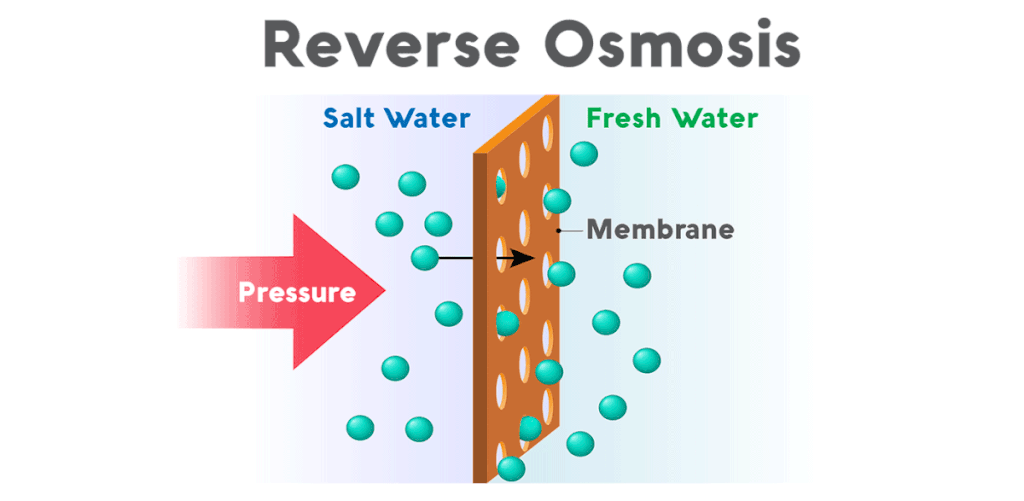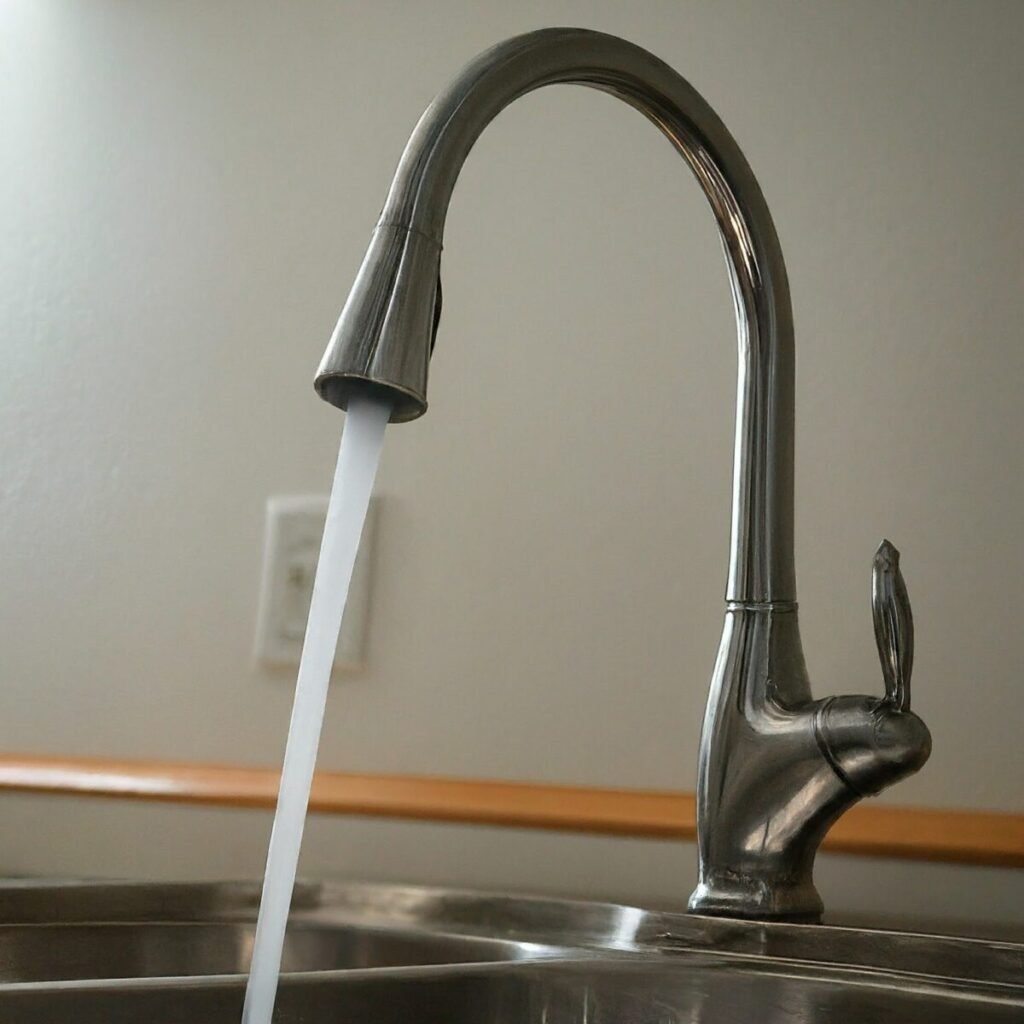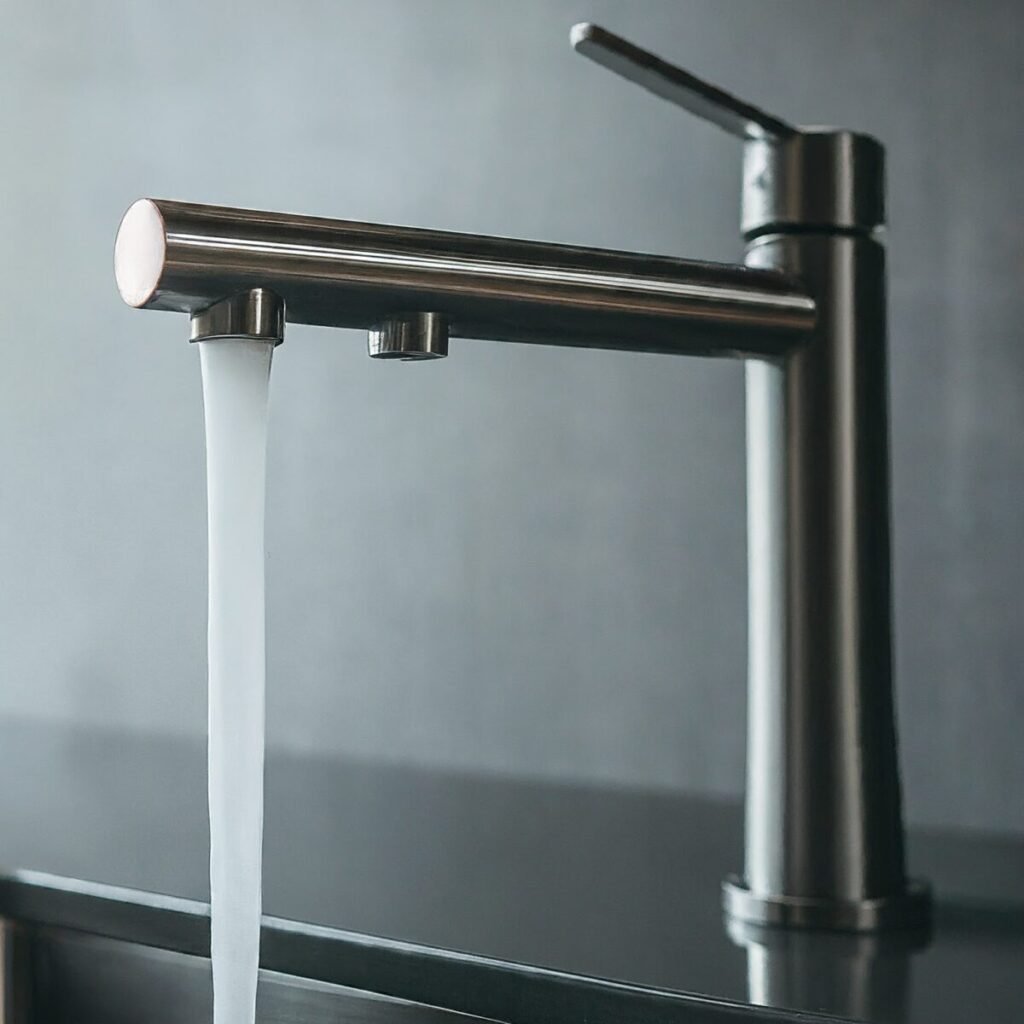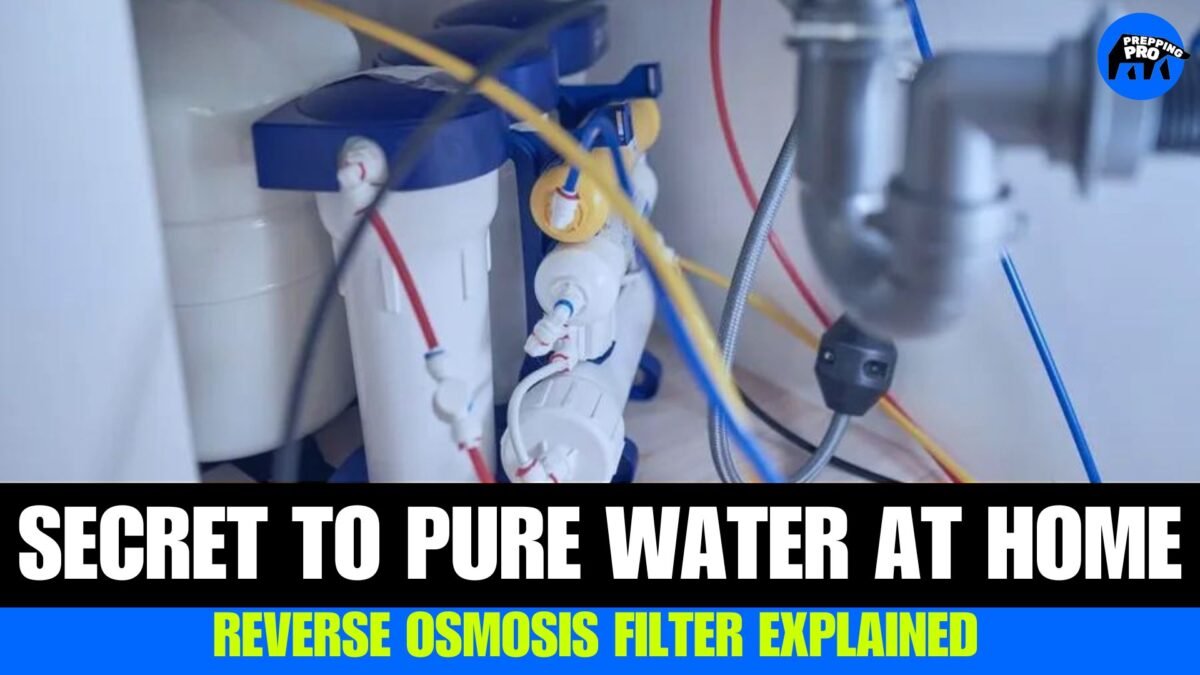Reverse osmosis is a highly effective water filtration method that provides us with clean and purified drinking water. By utilizing a semipermeable membrane, it removes various contaminants, ensuring the water we consume is of the highest quality.
In this article, I will walk you through the process of reverse osmosis, explaining how it works, what it removes, and the numerous benefits it offers.
So, let’s start our journey into the world of reverse osmosis and uncover the secrets behind this impressive filtration process as a part of building a complete home emergency kit.
Key Takeaways:
- Reverse osmosis is a highly effective water filtration method.
- It utilizes a semipermeable membrane to remove contaminants.
- The process ensures clean and purified drinking water.
- Reverse osmosis offers numerous benefits, including improved taste and cost savings.
- Proper installation and maintenance are crucial for optimal performance.
Table of Contents
What is Reverse Osmosis?

Reverse osmosis is a multi-stage water treatment process that uses pressure to force unfiltered water through a semipermeable membrane. This membrane allows water molecules to pass through while blocking contaminants such as dissolved solids, particles, and other impurities.
The result is clean, purified water known as permeate, while the concentrated contaminants are discarded as waste water called brine.
Reverse osmosis is widely used in various applications, including residential homes, restaurants, aquariums, and industrial settings. It is an effective method for producing clean drinking water and is often used as a point-of-use filtration system under kitchen sinks.
RO systems are available in different sizes and configurations to suit different needs.
By utilizing a semipermeable membrane, reverse osmosis effectively removes a wide range of contaminants from water. This includes chlorine, fluoride, arsenic, lead, bacteria, and many other dissolved solids.
The carbon and sediment filters in an RO system also help improve taste and odor, ensuring the water is not only clean but also great-tasting.
In the next section, we will explore in detail how reverse osmosis works and the specific contaminants it can remove, providing further insight into the benefits of this water filtration method.
How Does Reverse Osmosis Work?
Reverse osmosis works by utilizing a semipermeable membrane with small pores that allows water molecules to pass through while blocking contaminants. This process is driven by hydraulic pressure applied to the feed water, forcing it through the membrane.
As a result, dissolved solids, particles, and other impurities are left behind, while the filtered water, known as permeate, is collected.
The semipermeable membrane acts as a barrier, allowing only water molecules to pass through its microscopic pores.
This effectively removes a wide range of contaminants, including heavy metals, chemicals, bacteria, viruses, salts, and sediments. The result is clean and purified drinking water that meets high-quality standards.
Reverse osmosis systems typically consist of multiple stages of filtration to enhance the removal efficiency. These stages may include pre-filters to remove larger particles and sediment, activated carbon filters to remove chlorine and organic compounds, and the semipermeable membrane for the final purification.
Advantages of Reverse Osmosis:
- Highly effective in removing contaminants, including dissolved solids and heavy metals
- Improves the taste, odor, and clarity of water
- Provides clean and safe drinking water
- Removes harmful substances like chlorine, fluoride, and arsenic
- Can be used for both residential and commercial applications
| Contaminant | Percentage Removed by Reverse Osmosis |
|---|---|
| Chlorine | ≥99% |
| Fluoride | ≥95% |
| Arsenic | ≥99% |
| Lead | ≥99% |
| Bacteria | ≥99.9% |
What Does Reverse Osmosis Remove?
Reverse osmosis is a highly effective water filtration method that can remove a wide range of contaminants from water, ensuring clean and safe drinking water.

It is capable of removing up to 99% of dissolved solids, including minerals, heavy metals, chemicals, and microorganisms.
Here are some of the common contaminants that reverse osmosis can remove:
1. Chlorine
Reverse osmosis filters can effectively remove chlorine, which is commonly used to disinfect water supplies. Removing chlorine improves the taste and odor of the water.
2. Fluoride
Reverse osmosis is also capable of removing fluoride from water. Fluoride is often added to municipal water supplies to help prevent tooth decay, but some individuals prefer to reduce their exposure to fluoride.
3. Arsenic
Arsenic is a toxic chemical that can be found in groundwater. Reverse osmosis systems are effective at removing arsenic, ensuring the safety of the drinking water.
4. Lead
Lead is a heavy metal that can leach into the water from pipes and plumbing fixtures. Reverse osmosis filters can effectively remove lead, providing safe drinking water free from this harmful contaminant.
5. Bacteria and Viruses
Reverse osmosis is capable of removing bacteria and viruses from water. With its fine membrane pores, the system can effectively filter out these microorganisms, ensuring the water is free from harmful pathogens.
In addition to the contaminants mentioned above, reverse osmosis can also remove various other impurities such as nitrates, sulfates, pesticides, herbicides, and pharmaceutical residues.
The combination of the semipermeable membrane, carbon filters, and sediment filters in an RO system ensures comprehensive and effective filtration.
| Contaminant | Removal Efficiency |
|---|---|
| Chlorine | 99% |
| Fluoride | 95-98% |
| Arsenic | 95-99% |
| Lead | 95-99% |
| Bacteria and Viruses | 99.99% |
| Nitrates | 90-95% |
| Sulfates | 90-95% |
| Pesticides and Herbicides | 90-99% |
| Pharmaceutical Residues | 95-99% |
By removing these contaminants, reverse osmosis ensures that you and your family have access to clean and safe drinking water, protecting your health and well-being.
Benefits of Reverse Osmosis Filter

Investing in a reverse osmosis filter system offers a multitude of benefits for your health, budget, and the environment. Here are some key advantages:
- 1. Clean and Safe Drinking Water: Reverse osmosis effectively removes a wide range of contaminants from your water, providing you with clean and purified drinking water. It eliminates harmful substances such as chlorine, fluoride, lead, and bacteria, ensuring that your water is safe for consumption.
- 2. Improved Taste and Odor: By removing impurities and dissolved solids, reverse osmosis enhances the taste and odor of your drinking water. Say goodbye to unpleasant flavors and odors, and enjoy refreshing, great-tasting water.
- 3. Cost Savings: With a reverse osmosis system, you no longer need to rely on expensive bottled water. You can save money in the long run by producing your own purified water at home. Additionally, the reduced risk of water-related health issues can help you save on medical expenses.
- 4. Environmental Friendly: By using a reverse osmosis filter, you can significantly reduce your carbon footprint. It eliminates the need for single-use plastic bottles and minimizes the release of contaminants into the environment.
- 5. Convenience and Ease of Use: Reverse osmosis systems are easy to install and maintain. They require minimal effort on your part, as regular filter replacements and occasional system sanitization are the main maintenance tasks.

Table: Comparison of Reverse Osmosis Filter Benefits
| Benefits | Reverse Osmosis Filter | Alternative Water Filtration Methods |
|---|---|---|
| Clean and Safe Drinking Water | ✓ | ✗ |
| Improved Taste and Odor | ✓ | ✗ |
| Cost Savings | ✓ | ✗ |
| Environmental Friendly | ✓ | ✗ |
| Convenience and Ease of Use | ✓ | ✓ |
As shown in the table, a reverse osmosis filter outperforms alternative water filtration methods in terms of providing clean and safe drinking water, improved taste and odor, cost savings, environmental friendliness, and convenience.
For those interested in portable water filtration options for emergency preparedness or outdoor activities, portable water filters like the ones reviewed at Prepping Pro offer another solution.
Consider incorporating a reverse osmosis filter into your lifestyle to enjoy these benefits and ensure the quality of your drinking water.
Best Reverse Osmosis Systems
When it comes to choosing a reverse osmosis system for your home or business, there are several top-rated options available on the market. These systems are designed to provide efficient and reliable water filtration, ensuring that you have access to clean and purified drinking water.
One of the highly recommended brands is Fresh Water Systems, known for their reliable and high-performance RO systems.
Fresh Water Systems offers a range of reverse osmosis systems with multiple stages of filtration, ensuring thorough purification of your water. These systems are designed to remove a wide range of contaminants, including chlorine, fluoride, arsenic, lead, bacteria, and many others.
With up to 99% removal of dissolved solids, you can trust that your drinking water will be clean and safe for consumption.
When choosing the best reverse osmosis system for your needs, it is important to consider factors such as water usage, available space for installation, and maintenance requirements.
Fresh Water Systems provides a variety of system sizes and configurations to suit different needs, whether you require a small unit for point-of-use filtration or a larger system for whole house filtration.
It is also crucial to ensure proper installation and regular maintenance to maximize the performance and longevity of your RO system.
Why Choose Fresh Water Systems?

- Highly effective filtration: Fresh Water Systems’ RO systems are designed to remove a wide range of contaminants, ensuring clean drinking water.
- Reliability and performance: These systems are known for their reliable performance and efficient filtration, providing peace of mind.
- Competitive pricing: Fresh Water Systems offers competitive pricing for their high-quality RO systems, making them accessible to a wide range of customers.
- Multiple options available: Whether you need a small unit for point-of-use filtration or a larger system for whole house filtration, Fresh Water Systems has a variety of options to suit your needs.
- Excellent customer service: Fresh Water Systems provides excellent customer service, ensuring that you receive the support you need before, during, and after your purchase.
In conclusion, when it comes to the best reverse osmosis systems, Fresh Water Systems is a top choice. With their reliable performance, efficient filtration, and competitive pricing, you can trust their RO systems to provide clean and purified drinking water.
Environmental Impact of Reverse Osmosis

As we explore the technology behind reverse osmosis (RO) water filtration, it is essential to consider its environmental impact. While RO systems offer significant benefits in terms of water purification, they also have certain implications for the environment.
One of the positive environmental effects of reverse osmosis is its potential to reduce the use of single-use plastic bottles. By providing clean and safe drinking water at home, RO systems can help minimize plastic waste and the associated carbon footprint.
This is particularly important considering the detrimental effects of plastic pollution on our ecosystems.
However, it’s important to note that reverse osmosis does have some environmental drawbacks. RO systems require energy to operate, mainly to generate the necessary pressure for the filtration process.
While this energy consumption can vary depending on the specific system, it is crucial to consider the overall energy impact when evaluating the environmental sustainability of using reverse osmosis for water filtration.
How does reverse osmosis affect the environment?
In addition to energy consumption, reverse osmosis systems produce waste water as a byproduct. This waste water, also known as brine, contains the concentrated contaminants and impurities that are removed from the feed water.
Proper disposal of this waste water is essential to prevent any negative consequences on the environment.
To ensure the minimal environmental impact of reverse osmosis, it is important to consider sustainable practices such as recycling or reusing the waste water.
Some systems have the option to route the waste water to other applications, such as irrigation or cleaning, which can help reduce overall water waste.
By evaluating the energy consumption and waste disposal methods associated with reverse osmosis systems, we can make informed decisions about their environmental impact.
It is important to weigh the benefits of clean drinking water against the potential drawbacks to determine the best water filtration solution for both our health and the environment.
Is Reverse Osmosis Water Good for You?
Reverse osmosis water is generally safe and provides clean and purified drinking water. However, it is important to note that the filtration process removes minerals and some beneficial elements along with contaminants.
Some people prefer to remineralize RO water to restore these essential minerals. Additionally, if you rely solely on an RO system for drinking water, it is important to ensure you have a balanced diet that provides necessary minerals.
While reverse osmosis effectively removes many contaminants, it also eliminates minerals like calcium and magnesium, which are important for overall health.
These minerals contribute to the taste and alkalinity of water and may provide some health benefits. However, it’s worth noting that most people obtain these minerals through their daily diet, so the impact of RO water on overall mineral intake is minimal.
Ultimately, whether reverse osmosis water is good for you depends on your individual needs and preferences.
If you are concerned about the mineral content of your drinking water, you can consider remineralizing the water by adding mineral drops or using a remineralization filter. It’s also important to remember that staying hydrated with any type of clean, filtered water is essential for maintaining good health.
Overall, reverse osmosis water can be a safe and reliable option for clean drinking water.
However, it is important to consider the potential loss of minerals and make any necessary adjustments to your diet or RO system to ensure you are getting the nutrients your body needs.
Where is Reverse Osmosis Used?
Reverse osmosis systems are widely used in various settings to provide clean and purified drinking water. From residential homes to commercial establishments and even industrial applications, these systems have become an essential part of ensuring safe and healthy water consumption. Let’s explore some of the common places where reverse osmosis is installed:
Kitchen sinks:
One of the most popular locations for reverse osmosis systems is under the kitchen sink. This allows for convenient access to clean drinking water directly from the tap. The compact size of these systems makes them a practical choice for residential use.
Whole house filtration:
In larger residential properties, reverse osmosis systems can be installed to provide filtered water throughout the entire house. This ensures that every faucet and shower delivers clean and purified water, offering peace of mind for the whole family.
Commercial establishments:
Restaurants, cafes, and other food establishments often rely on reverse osmosis systems to maintain high-quality water for cooking, beverages, and ice production. These systems help enhance the taste of food and drinks while ensuring compliance with health and safety standards.
| Location | Benefits |
|---|---|
| Kitchen sinks | – Convenient access to clean drinking water – Compact size for residential use |
| Whole house filtration | – Clean and purified water throughout the entire house – Peace of mind for the whole family |
| Commercial establishments | – Enhanced taste of food and drinks – Compliance with health and safety standards |
Aside from these common installations, reverse osmosis systems are also used in water fountains, aquariums, and other specialized setups. The versatility and efficiency of reverse osmosis make it an ideal choice for various water filtration needs. Whether it’s for residential, commercial, or industrial purposes, proper installation and maintenance are crucial to ensure optimal performance and the longevity of the system.
How to Maintain a Reverse Osmosis System
Maintaining a reverse osmosis (RO) system is essential to ensure its longevity and efficiency in providing clean and purified drinking water. Regular maintenance tasks should be performed to keep the system in optimal condition.
One important maintenance task is replacing the pre-filters and post-filters as recommended by the manufacturer. These filters help remove sediment, chlorine, and other contaminants, and their timely replacement is crucial for effective filtration. Additionally, sanitizing the RO system periodically helps eliminate any bacteria or mold that may have accumulated.
Regular inspection for leaks or malfunctions is also necessary. Check all connections and fittings to ensure they are secure and free from any leaks. If any leaks are detected, they should be repaired promptly to prevent further damage to the system.
Regular Maintenance Tasks for Reverse Osmosis System:
- Replace pre-filters and post-filters as recommended by the manufacturer
- Sanitize the system periodically to remove bacteria or mold
- Inspect for leaks or malfunctions
- Ensure all connections and fittings are secure
It is also important to monitor the quality of the filtered water to ensure it meets the desired standards. Regularly test the water for any signs of contamination or changes in taste and odor. If any issues are identified, adjustments or repairs may be necessary to maintain the system’s performance.
By following these maintenance practices, you can ensure that your reverse osmosis system continues to provide clean and safe drinking water for you and your family.
Factors to Consider When Choosing an RO System
When selecting a reverse osmosis (RO) system for your water filtration needs, there are several factors to consider. These factors will help you choose a system that best fits your requirements in terms of water usage, available space for installation, water quality and contaminants present, maintenance requirements, and budget.
Water Usage:
Determine your daily water consumption to understand the capacity needed for the RO system. Consider the number of people in your household or employees in your workplace who will be using the filtered water. This will help you choose between a compact under-sink system or a larger whole-house filtration system.
Installation Space:
Evaluate the available space where you want to install the RO system. Under-sink systems require limited space, while whole-house systems may need a dedicated area. Consider the dimensions and footprint of the system to ensure a proper fit.
Water Quality:
Assess the quality of your water and identify the specific contaminants you want to remove. Conduct a water test or consult with a water treatment professional to determine the presence of impurities such as chlorine, lead, fluoride, or heavy metals. This will help you choose an RO system with the appropriate filtration capabilities.
Maintenance Requirements:
Different RO systems have varying maintenance needs. Some systems require regular filter replacements, while others may include additional maintenance tasks like sanitizing or flushing. Consider the time and effort you are willing to invest in maintaining the system to ensure its optimal performance.
Budget:
Determine your budget for an RO system, including the initial purchase cost, installation expenses, and ongoing maintenance costs. Research different brands and models to find a system that offers the best value for your investment without compromising on quality and performance.
By considering these factors, you can make an informed decision and choose an RO system that meets your specific needs, providing you with reliable and efficient water filtration for clean and purified drinking water.
Conclusion
After exploring the intricacies of reverse osmosis, it becomes clear that it is an exceptional water filtration method. By utilizing a semipermeable membrane, reverse osmosis effectively removes contaminants from water, leaving behind clean and purified drinking water. With its ability to eliminate various impurities, such as chlorine, fluoride, arsenic, and bacteria, it ensures the provision of safe and healthy water for consumption.
The benefits of reverse osmosis are widespread. Not only does it improve the taste and odor of water, but it also eliminates the need for bottled water, thereby reducing plastic waste and contributing to a more sustainable environment. Moreover, RO systems are cost-effective, easy to install and maintain, making them suitable for both residential and commercial use.
To make the most of reverse osmosis filtration, proper installation and regular maintenance are essential. This includes replacing filters as recommended, sanitizing the system periodically, and monitoring the quality of the filtered water. By taking these steps, you can ensure the longevity and efficiency of your reverse osmosis system.
FAQ
What is reverse osmosis?
Reverse osmosis is a water filtration process that removes contaminants by forcing water through a semipermeable membrane under pressure.
How does reverse osmosis work?
Reverse osmosis works by utilizing a semipermeable membrane to filter water, allowing water molecules to pass through while blocking contaminants.
What does reverse osmosis remove from water?
Reverse osmosis can remove a wide range of contaminants from water, including chlorine, fluoride, arsenic, lead, bacteria, and many others.
How can reverse osmosis benefit me?
Reverse osmosis provides clean and great-tasting drinking water, reduces the need for bottled water, and saves money in the long run.
What are the best reverse osmosis systems?
Some top-rated reverse osmosis brands include Fresh Water Systems, which offer reliable and efficient RO systems with multiple stages of filtration.
While we’ve discussed the benefits of reverse osmosis systems for home and commercial use, some individuals may also seek portable solutions for their water filtration needs. If you’re interested in exploring portable options, check out the reviews on Prepping Pro for top-rated portable water filters.
What is the environmental impact of reverse osmosis?
Reverse osmosis can reduce the use of single-use plastic bottles and minimize the discharge of contaminants into the environment, but it does require energy to operate and produces waste water as a byproduct.
Is reverse osmosis water good for you?
While reverse osmosis removes minerals and some beneficial elements, it provides clean and purified drinking water. Some people prefer to remineralize it to restore essential minerals.
Where is reverse osmosis used?
Reverse osmosis systems are used in various settings, including residential homes, commercial establishments, and industrial applications. They can be installed under kitchen sinks, for whole house filtration, water fountains, aquariums, and more.
How do I maintain a reverse osmosis system?
Regular maintenance, including replacing filters, sanitizing the system, and checking for leaks or malfunctions, is important for optimal performance.
What factors should I consider when choosing an RO system?
Factors to consider include water usage, available space for installation, water quality and contaminants present, maintenance requirements, and budget.


